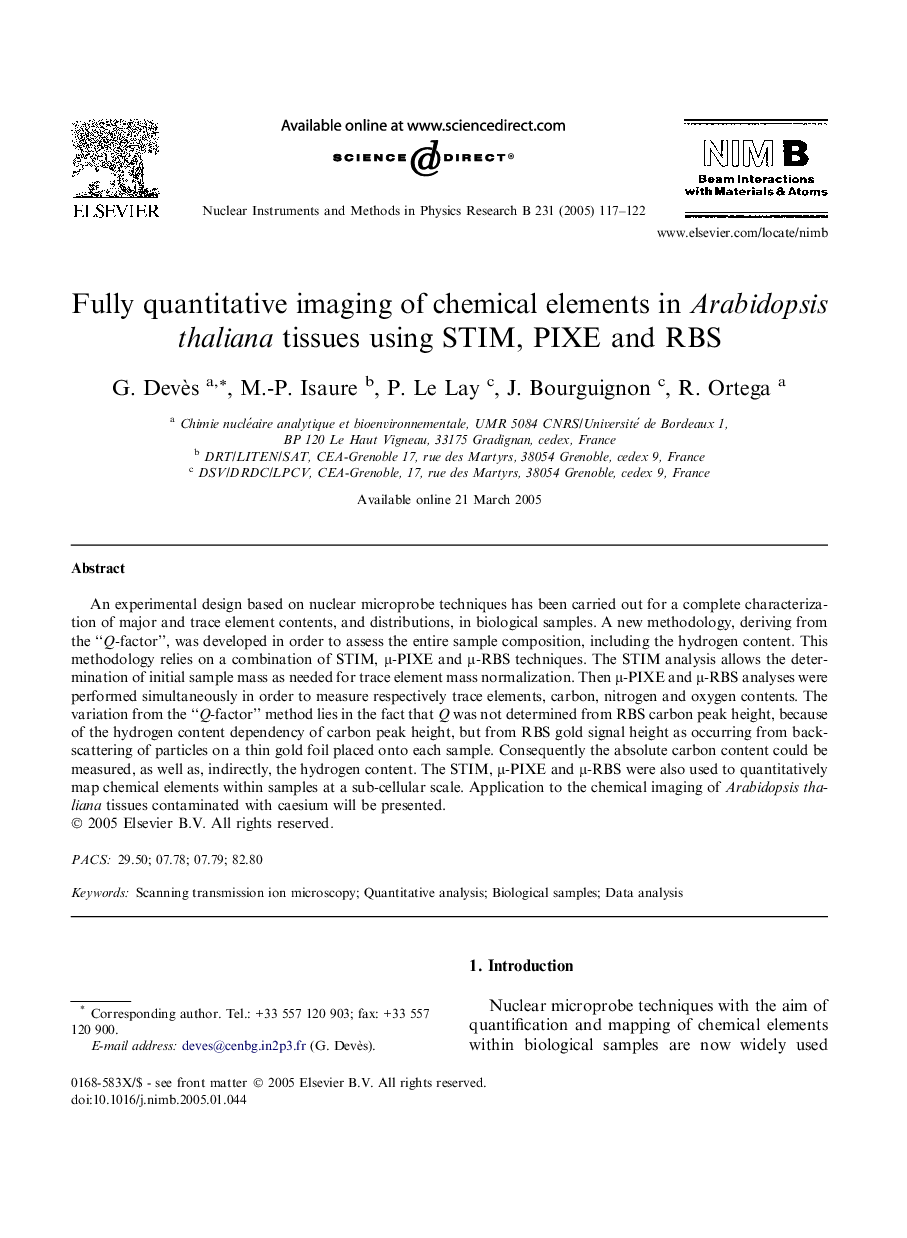| Article ID | Journal | Published Year | Pages | File Type |
|---|---|---|---|---|
| 9818166 | Nuclear Instruments and Methods in Physics Research Section B: Beam Interactions with Materials and Atoms | 2005 | 6 Pages |
Abstract
An experimental design based on nuclear microprobe techniques has been carried out for a complete characterization of major and trace element contents, and distributions, in biological samples. A new methodology, deriving from the “Q-factor”, was developed in order to assess the entire sample composition, including the hydrogen content. This methodology relies on a combination of STIM, μ-PIXE and μ-RBS techniques. The STIM analysis allows the determination of initial sample mass as needed for trace element mass normalization. Then μ-PIXE and μ-RBS analyses were performed simultaneously in order to measure respectively trace elements, carbon, nitrogen and oxygen contents. The variation from the “Q-factor” method lies in the fact that Q was not determined from RBS carbon peak height, because of the hydrogen content dependency of carbon peak height, but from RBS gold signal height as occurring from backscattering of particles on a thin gold foil placed onto each sample. Consequently the absolute carbon content could be measured, as well as, indirectly, the hydrogen content. The STIM, μ-PIXE and μ-RBS were also used to quantitatively map chemical elements within samples at a sub-cellular scale. Application to the chemical imaging of Arabidopsis thaliana tissues contaminated with caesium will be presented.
Keywords
Related Topics
Physical Sciences and Engineering
Materials Science
Surfaces, Coatings and Films
Authors
G. Devès, M.-P. Isaure, P. Le Lay, J. Bourguignon, R. Ortega,
